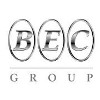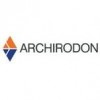Filter interviews by
SRK Constructions Projects Senior Engineer Interview Questions and Answers
8 Interview questions
The density value of aggregate to M30 concrete is typically around 1450-1550 kg/m^3.
The density of aggregate used in M30 concrete is usually between 1450-1550 kg/m^3
The specific density value may vary depending on the type of aggregate used
The density of aggregate is an important factor in determining the overall density and strength of the concrete mix
High-strength low-alloy (HSLA) steel is commonly used for bridge works due to its superior strength and durability.
High-strength low-alloy (HSLA) steel is commonly used for bridge construction
HSLA steel offers superior strength and durability compared to traditional carbon steel
Examples of HSLA steel used in bridges include ASTM A572 and ASTM A588
Generally, grade 53 cement is used in RCC slabs due to its high strength and durability.
Grade 53 cement is commonly used in RCC slabs for its high compressive strength.
It provides better resistance to cracking and shrinkage compared to lower grade cements.
Grade 53 cement is suitable for heavy-duty structures like RCC slabs, beams, and columns.
Liquid limit and plastic limit are two important properties of soil used in geotechnical engineering.
Liquid limit is the moisture content at which soil changes from a plastic to a liquid state.
Plastic limit is the moisture content at which soil changes from a plastic to a semi-solid state.
The difference between liquid limit and plastic limit is known as the plasticity index.
These properties are determined using st...
Mix proportioning is crucial for achieving desired concrete properties.
Determine the required strength and durability of the concrete
Select suitable materials such as cement, aggregates, and water
Calculate the proportions based on the desired properties and material characteristics
Adjust the mix design based on trial batches and test results
Consider factors like workability, setting time, and cost
The proportionate of M15 PCC is 1:2:4 (cement:sand:aggregate).
M15 PCC stands for Mix 15 Plain Cement Concrete.
The proportionate of M15 PCC is 1:2:4, which means 1 part cement, 2 parts sand, and 4 parts aggregate.
This proportion is commonly used in construction for moderate strength concrete.
Admixtures are added to concrete to alter its properties or enhance its performance.
Admixtures are added to concrete during mixing to modify its properties such as workability, strength, durability, and setting time.
They can be classified into different types such as water-reducing, air-entraining, accelerating, retarding, and plasticizers.
Examples of admixtures include superplasticizers, which improve workability...
Design mix refers to the proportion of various materials in concrete mix to achieve desired properties.
Design mix is a specific combination of cement, aggregates, and water to achieve the desired strength and durability of concrete.
It is determined by conducting tests and calculations to ensure the mix meets the required specifications.
Design mix allows engineers to tailor the concrete mix for specific application...
SRK Constructions Projects Senior Engineer Interview Experiences
1 interview found
I applied via LinkedIn and was interviewed in Jan 2023. There were 5 interview rounds.

Structures for pipe , box , slab , and bridge
(6 Questions)
- Q1. What is the process of using admixture in concrete
- Ans.
Admixtures are added to concrete to alter its properties or enhance its performance.
Admixtures are added to concrete during mixing to modify its properties such as workability, strength, durability, and setting time.
They can be classified into different types such as water-reducing, air-entraining, accelerating, retarding, and plasticizers.
Examples of admixtures include superplasticizers, which improve workability with...
- Q2. What is the proportionate of m15 pcc
- Ans.
The proportionate of M15 PCC is 1:2:4 (cement:sand:aggregate).
M15 PCC stands for Mix 15 Plain Cement Concrete.
The proportionate of M15 PCC is 1:2:4, which means 1 part cement, 2 parts sand, and 4 parts aggregate.
This proportion is commonly used in construction for moderate strength concrete.
- Q3. What is liquid limit and plastic limit
- Ans.
Liquid limit and plastic limit are two important properties of soil used in geotechnical engineering.
Liquid limit is the moisture content at which soil changes from a plastic to a liquid state.
Plastic limit is the moisture content at which soil changes from a plastic to a semi-solid state.
The difference between liquid limit and plastic limit is known as the plasticity index.
These properties are determined using standar...
- Q4. Which type of grade cement used in Rcc slab
- Ans.
Generally, grade 53 cement is used in RCC slabs due to its high strength and durability.
Grade 53 cement is commonly used in RCC slabs for its high compressive strength.
It provides better resistance to cracking and shrinkage compared to lower grade cements.
Grade 53 cement is suitable for heavy-duty structures like RCC slabs, beams, and columns.
- Q5. Which type of steel used for bridge works
- Ans.
High-strength low-alloy (HSLA) steel is commonly used for bridge works due to its superior strength and durability.
High-strength low-alloy (HSLA) steel is commonly used for bridge construction
HSLA steel offers superior strength and durability compared to traditional carbon steel
Examples of HSLA steel used in bridges include ASTM A572 and ASTM A588
- Q6. What is the dencity value of aggregate to m30 concrete
- Ans.
The density value of aggregate to M30 concrete is typically around 1450-1550 kg/m^3.
The density of aggregate used in M30 concrete is usually between 1450-1550 kg/m^3
The specific density value may vary depending on the type of aggregate used
The density of aggregate is an important factor in determining the overall density and strength of the concrete mix
(1 Question)
- Q1. How should prepare a mix proportionate
- Ans.
Mix proportioning is crucial for achieving desired concrete properties.
Determine the required strength and durability of the concrete
Select suitable materials such as cement, aggregates, and water
Calculate the proportions based on the desired properties and material characteristics
Adjust the mix design based on trial batches and test results
Consider factors like workability, setting time, and cost
(1 Question)
- Q1. What is meant by design mix
- Ans.
Design mix refers to the proportion of various materials in concrete mix to achieve desired properties.
Design mix is a specific combination of cement, aggregates, and water to achieve the desired strength and durability of concrete.
It is determined by conducting tests and calculations to ensure the mix meets the required specifications.
Design mix allows engineers to tailor the concrete mix for specific applications, su...
Top trending discussions






Interview questions from similar companies

Senior Engineer Interview Questions & Answers
KEPCO Plant Service & Engineeringposted on 5 Dec 2023
I applied via Walk-in and was interviewed before Dec 2022. There were 2 interview rounds.

(5 Questions)
- Q1. What are you doing at your past company
- Q2. Salary how much you want😊
- Q3. Why you want to join our company
- Q4. Are you dedicated with your work
- Q5. Are you technically sound
Interview Preparation Tips

I applied via Referral and was interviewed in Dec 2022. There were 3 interview rounds.

(1 Question)
- Q1. Technical question s
(1 Question)
- Q1. What is your expected salary
- Ans.
I expect a competitive salary based on my experience, skills, and the responsibilities of the role.
I have researched the average salary range for senior engineers in this industry and location.
I have considered my years of experience and expertise in the field.
I am open to discussing the salary package based on the overall compensation package, including benefits and opportunities for growth.
I am confident that my skil...
Interview Preparation Tips
- Plant Maintenance
- Transit Mixer
- Diesel Generator
- Excavation
- Diesel

(2 Questions)
- Q1. Questions will be asked on previous company roles and responsibilities.
- Q2. Depends upon previous experience.
(2 Questions)
- Q1. Basics on structure and finishings
- Q2. Questions on structure and finishings
Interview Preparation Tips

(2 Questions)
- Q1. How much package expected?
- Ans.
I expect a competitive package that reflects my skills, experience, and the industry standards for a Senior Engineer role.
Research industry standards: For example, Glassdoor or Payscale can provide insights into salary ranges for similar roles.
Consider total compensation: Include bonuses, stock options, and benefits in your expectations.
Reflect on your experience: If you have specialized skills or certifications, you m...
- Q2. Immediately relocate pan india
Interview Preparation Tips

Interview Questionnaire
1 Question
- Q1. What's your experience?
Interview Preparation Tips

(1 Question)
- Q1. Experience

I applied via Walk-in and was interviewed in Aug 2023. There were 2 interview rounds.
(1 Question)
- Q1. Good comunication skills
(1 Question)
- Q1. Knowledge about Materials,WPS,Welder qualification, Filler rods.

I applied via Walk-in and was interviewed before Jan 2022. There were 2 interview rounds.

(3 Questions)
- Q1. What was your previous salary what is your expect
- Ans.
I am unable to provide my previous salary as it is confidential. However, I am expecting a competitive salary based on my qualifications and experience.
My previous salary is confidential and I am unable to disclose it.
I am expecting a salary that is commensurate with my qualifications and experience.
I am open to discussing salary expectations during the negotiation process.
I believe that a competitive salary is importa...
- Q2. Previous salary 1 expected salary 2 whatever.
- Q3. Educational mass card certificate documents previous salary certificate if you worked
Interview Preparation Tips

(1 Question)
- Q1. About experience
- Ans.
I have over 5 years of experience in QA QC engineering, focusing on process improvement and compliance in various projects.
Led a team in implementing a new quality management system that reduced defects by 30%.
Conducted regular audits and inspections, ensuring compliance with industry standards.
Developed and executed test plans for software applications, improving functionality and user experience.
Collaborated with cro...
(2 Questions)
- Q1. About experience
- Ans.
I have over 5 years of experience in QA QC engineering, focusing on process improvement and compliance in various industries.
Led a team in implementing a new quality management system that reduced defects by 30%.
Conducted regular audits and inspections, ensuring compliance with industry standards.
Developed and executed test plans for software applications, improving functionality and user experience.
Collaborated with c...
- Q2. About welding, inspection and documentation
SRK Constructions Projects Interview FAQs
Tell us how to improve this page.
SRK Constructions Projects Interviews By Designations
Interview Questions for Popular Designations
Overall Interview Experience Rating
based on 1 interview experience
Difficulty level
Duration
Interview Questions from Similar Companies
|
Senior Marketing Executive
9
salaries
| ₹11.3 L/yr - ₹21.1 L/yr |
|
Project Manager
5
salaries
| ₹18 L/yr - ₹20.4 L/yr |
|
Graduate Engineer Trainee (Get)
5
salaries
| ₹1.5 L/yr - ₹4.6 L/yr |
|
Senior Foreman
4
salaries
| ₹5.4 L/yr - ₹6.9 L/yr |
|
Highway Engineer
4
salaries
| ₹2 L/yr - ₹5 L/yr |

J K Fenner

Eversendai

Al Tasnim Enterprises

Amara Raja Infra
- Home >
- Interviews >
- SRK Constructions Projects Interview Questions












